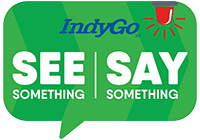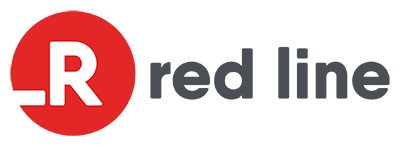

Creating World Class Transit for a World Class City
A key feature of any world class city is simply the ease of getting from one place to another. We call it “mobility.” It’s as essential as access to electricity and water. It is what makes a city a better home, a better location to work and a better place to visit.
A strong public transit system in Indianapolis strengthens the state’s overall competitiveness and attracts investments and talent that benefit communities in Central Indiana and across the state.
To date, more than $1.2 billion in economic development has been generated from IndyGo’s BRT system.
By connecting workers to jobs, customers to businesses and visitors to attractions, IndyGo fuels economic growth in and beyond Indianapolis and contributes to the state’s economy.
Why Transit is Essential

Driving Hoosier Hospitality
From Gen Con to the Final Four, mass transit is a vital link in providing residents and visitors with a convenient, affordable and sustainable way to experience everything Indy has to offer.
IndyGo helps reduce traffic congestion, eases parking challenges and ensures seamless access to key venues.
With expanded routes and frequent service, public transit makes it easier for everyone to enjoy Indy’s vibrant events while supporting local businesses and keeping the city moving efficiently.

Workforce Access & Investment

Whether it’s helping employees get to work on time, supporting job training programs or creating transit-related careers in operations, maintenance and construction, IndyGo plays a crucial role in workforce development. By removing transportation barriers, IndyGo empowers workers, strengthens businesses, and fuels Indiana’s economic growth. Learn more about an exciting career at IndyGo by visiting our Employment page.
Public Transportation Provides Economic Opportunities
Every Hoosier – individuals, families, communities and businesses – benefits from public transit. It is a lifeline for millions of Indianapolis residents connecting them to people, places and possibilities. It also builds thriving communities, creates jobs, eases traffic congestion and promotes a cleaner environment. Investment in public transportation spurs the local economy.
- According to the American Public Transportation Association (APTA), every $1 invested in public transportation generates $5 in economic returns.
- Every $1 billion invested in public transportation supports and creates approximately 50,000 jobs.
- Every $10 million in capital investment in public transportation yields $30 million in increased business sales.
- Every $10 million in operating investment yields $32 million in increased business sales.
- An estimated $39 billion of public transit expenditures flow into the private sector.
- Home values were up to 24% higher near public transportation than in other areas. Hotels in cities with direct rail access to airports raise 11% more revenue per room than hotels in those cities without.
- The average household spends 16 cents of every dollar on transportation, and 93% of this goes to buying, maintaining, and operating cars, the largest expenditure after housing.
- A household can save more than $13,000 by taking public transportation and living with one less car.
- 87% of trips on public transit have a direct impact on the local economy.
- Of all riders, 71% are employed and 7% are students.
- Traveling by public transportation is 10 times safer per mile than traveling by automobile.
- A person can reduce his or her chance of being in an accident by more than 90% simply by taking public transit as opposed to commuting by car.
Current System Improvements

MyKey is IndyGo’s account-based fare system. Riders can choose to pay and ride withtheir smartphones through the MyKey app or a reloadable card on Bus Rapid Transit (BRT) or fixed routes. With MyKey, riders can also take advantage of fare capping perks!
Fare Capping gives you an alternative to a weekly or monthly bus pass. It removes the barrier of the upfront cost of passes by providing a “pay as you go” fare structure with a “cap” on the amount you pay. Fare capping is a new feature available only through the MyKey fare system.
- Daily fare cap: $4.00 full fare / $2.00 half fare.
- Weekly fare cap: $15.75 full fare / $7.65 half fare. Your tap card must be registered to your account to be eligible for weekly fare capping.
Once the fare cap amount is met within a single day or transit week, you will not be charged any additional fares until the start of a new day or transit week. To learn more about MyKey and fare capping, click here.

IndyGo has implemented technology enhancements that improve riders’ abilities to plan, pay and track their trips. Since IndyGo implemented MyKey, its account-based fare system, riders can now pay for their trips through the MyKey app. Riders can get real-time updates on bus travel times using the Transit or myStop apps, as well as Google Maps.

IndyGo’s Blue Line is the third phase of our far-reaching transit-system re-engineering project that we call Bus Rapid Transit (BRT). This line will replace our current Route 8, which connects Cumberland at its east end to the Indianapolis International Airport on the city’s west side. The Blue Line will run 24 miles in total, making it the largest BRT route in our network. Its service will reach more than 114,000 jobs and 45,000 people. The Blue Line, which we broke ground on in February 2025, is more than just a new transit route. It is a monumental infrastructure project that will make it safer and more comfortable to travel along the corridor. Once complete in 2028, it will have added or improved more than nine miles of sidewalks, 350 ADA curb ramps, two miles of crosswalks, 45 lane miles of street pavement and 60 traffic signals. For more information about Blue Line construction, please visit our blue line page.
Community Investment
IndyGo partners with the Federal Transit Administration (FTA) to enhance our public transportation system through non-competitive grants, awarded based on formulas established by Congress, and discretionary grants, which are made available to agencies that participate in a competitive grant application process.
FTA Funding (2024)
- Urbanized Area Formula Grant (non-competitive) = $7,657,251
- Bus & Bus Facilities Infrastructure Investment Program (non-competitive and discretionary)* = $1,898,427
- Enhanced Mobility for Seniors & Individuals with Disabilities (non-competitive) = $1,375,871
- Major Capital Investment Grants, Small Starts Funding for the Blue Line (discretionary) = $149,999,000
Local Funding Contribution
- Rebuilding America Infrastructure with Sustainability and Equity for the Blue Line (discretionary) = $21,900,000
- Congestion Mitigation & Air Quality and Surface Transportation Block Grant to replace outdated buses and purchase new Blue Line buses (discretionary) = $11,344,839
- Community Project Funding through Congressman Andre Carson to be used for stormwater upgrades along Blue Line (discretionary) = $1,000,000
City of Indianapolis
- General Fund for Blue Line (non-competitive) = $1,500,000
* Capital projects funded through this program require a minimum of a 20% local match.


